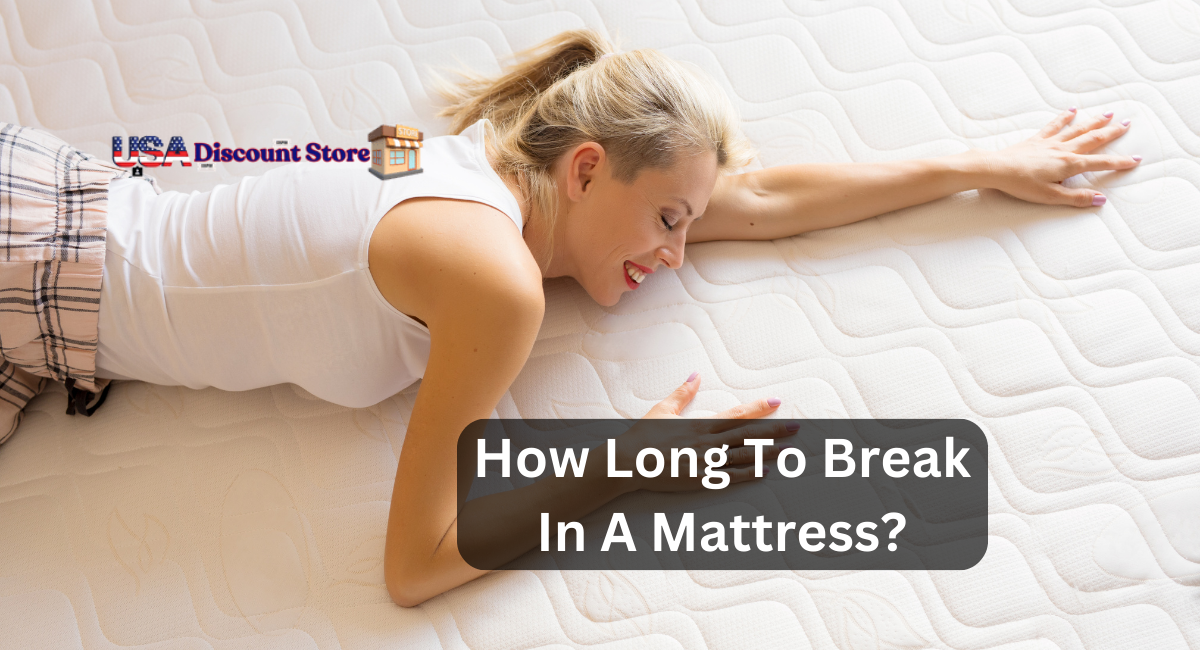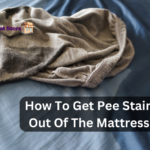Similar to the workings of alchemy, time possesses the capacity to improve everything, including mattresses. Gratitude is extended to you if you have recently replaced your previous mattress with an elegant new one. You are progressing toward attaining the tranquil slumber experiences you have been yearning for. So, how long to break in a mattress?
New mattresses usually require between thirty and ninety days to break in. Throughout this period of break-in, the body adjusts to the further support. It could feel like an enormous stretch, particularly if you have been experiencing difficulty sleeping recently. Whether or not your mattress feels perfect initially can differ based on the mattress brand and your sleeping style.
How Long Does It Take A New Mattress To Break In?
Unexpectedly, a new mattress requires thirty to ninety days to break in. Consider that while your body is familiar with your old mattress, it takes time for the latest materials to become comfortable. Varieties in mattress materials result in distinct break-in periods for each type.
Similar to how one should break in a new pair of shoes, there are methods for breaking in a mattress. Remember that beds have a seven to ten-year lifespan, so a brief delay for comfort will not significantly impact your mattress enjoyment time. Additionally, it is critical to avoid any break-in techniques that may shorten the lifespan of a mattress.
1. Memory Foam Mattresses & Hybrid Mattresses
Memory foam and hybrid mattresses typically require the most time to break in. The duration typically varies from thirty to ninety days, contingent upon the specific polyurethane composition of the bed. A memory foam or hybrid mattress might feel substantial in a chilly residence.
As the temperature rises, the bed becomes softer. This method allows you to warm the bed slightly before sleeping. The durability of memory foam mattresses is better than that of low-density foam. Thus, not only does this extend the life of your memory foam mattress, but it also requires a little more time to become comfortable. Generally, memory foam with a lower density requires less time to decompress.
2. Innerspring Mattresses
The break-in period of innerspring mattresses is contingent upon their exact construction. A pillow or Euro top typically expedites the break-in period by approximately 30 days.
The maintenance of innerspring mattresses is critical. Rotate them every three to six months to prevent uneven deterioration. In the absence of this, sagging and damage may occur. A box spring is suitable for use with an innerspring mattress.
It is imperative to consider the significance of your bed frame and foundation. A well-constructed foundation can significantly alter the feel of your mattress. If you are dissatisfied with your mattress, allow additional time for yourself and the bed to acclimate. Although patience is essential, you can accelerate the process by following these steps to rapidly break into a new mattress.
3. Latex Mattresses
Not only do latex mattresses provide immediate comfort, but support extends beyond the mattress’s firmness. The mattress’s apex is maintained in place by supportive layers. One will encounter the anticipated comfort level when initiating slumber on a latex mattress. Breaking it in will not result in substantial alterations.
Additionally, natural latex, including Talalay and Dunlop latex, does not off-gas, so there will be no initial chemical odors.
Break In Your New Mattress – Tips & Tricks
Do not be disheartened by your disappointment with your new mattress; it may still be an excellent fit. After purchasing one, schedule a break-in period and time to adjust to the new bed. Here are some of our most recommended strategies for immediately breaking in your new mattress.
1. Allow Your Mattress to Breathe
If you purchased your bed online, it was delivered in a compressed box. Additionally, most mattress manufacturers encase them in airtight plastic. The materials may initially emit a vapor known as “off-gassing,” which can persist for one to two days. Also, most mattresses are compressed during transport, requiring time to reshape.
Four to ten hours are required for the model to expand, although this can vary. Prematurely falling asleep on it can cause discomfort and disrupt its expansion. One potential solution is to allow your online mattress to air out on the first day without placing any linens or body weight on it.
2. Apply Pressure to the Mattress
An attempt at making your bed softer would be to stroll on it. Outstanding on latex and memory foam. You could stack literature on it as an alternative to walking on your bed.
Crawling on your hands and knees is more comfortable with an innerspring or hybrid mattress. Excessive body weight exerts stress on springs, thereby accelerating their deterioration.
3. Practice Patience
Do not be disheartened if you do not immediately fall in love with your new bed. Even your favored footwear may have caused discomfort on the first day. Your brand-new mattress could take thirty to sixty days to achieve a comfortable feel. Especially if your previous bed had begun to sag, become softer, or develop body impressions, it is normal for your body to perceive differences.
Remember that the manufacturing process may require a longer duration for higher-quality mattresses due to using more durable materials.
4. Warm Up Your Mattress
Certain mattress materials, including memory foam mattresses, become smoother and more flexible as the temperature rises. Therefore, if you desire to break into your new bed as soon as possible, warm up your chamber slightly. It ought to contribute to a cozier slumber.
Keep in mind that extremely high temperatures can disrupt sleep, so this advice comes with a caveat: you may need to lower the temperature of your room in the evening to fall asleep. Anticipating the need to preheat a space that is currently cooler is preferable.
5. Consistently Sleep on It
Avoid succumbing to frustration and allowing it to deceive you into abandoning the endeavor, substituting your newly acquired mattress for couch rest, or slipping into the guest room to sleep. Remember that consistently using your new bed can accelerate the “breaking in” process.
This method should elevate your mattress to the status of a comfortable haven. During the trial period, if you maintain a consistent sleeping pattern for a few nights, you will appreciate the comfort of your purchase much sooner than you anticipate.
6. Place It on the Right Foundation
Before setting your bed on that ancient foundation, pause momentarily. Determine whether or not these two components can genuinely match. By examining it closely, please verify that your foundation is in excellent condition; it should not be worn out, sagging, or cracked.
It is only sometimes necessary to purchase an entirely fresh foundation. However, if you’ve switched to a different form of bed, buying a new foundation may be the best course of action to ensure that everything fits appropriately.
7. Trust Your Instincts
If the bed does not make you comfortable, refrain from forcing it. However, before making a final decision, try using the slumber trial. After some time, allow your body to acclimate to the mattress; should it continue to cause discomfort, you retain the prerogative to return the product.
8. Give It Enough Time
Have you ever pondered why mattress manufacturers advise you to sleep on their product for several nights before deciding whether to return or exchange it? In any case, the key is for your body to adjust to the new substances. In general, mattresses with a lower density become more comfortable more quickly than those with a higher density.
Today, mattress specialists are about extending your trial period so your body can adjust to the new sleeping arrangement. One may find solace in that a month of sleepless nights is not an insurmountable obstacle; alternatively, they may engage in dialogue with the brand to voice their apprehensions.
9. Consider a Mattress Topper
If you recently purchased a bed through a short trial period or are utterly obsessed with your new mattress but unsure how to make it softer or firmer, consider investing in a mattress topper.
It is an additional layer of support or fluffiness for your bed when required without costing as much as purchasing an entirely new mattress.
Mattress break-in times differ according to brand and individual comfort preferences. A few weeks may be required to deliver a memory foam mattress, whereas an innerspring mattress may require less time. With consistent use, periodic rotation or inversion, and perseverance, the mattress gradually conforms to the user’s form, delivering optimal comfort.
Thanking you for reading…..







